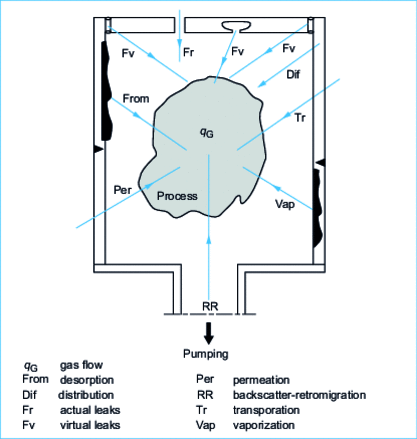2. Gas loads
To create a vacuum, the gases in the working chamber must be evacuated. To calculate the installation, we need to define the gas load or flow to be pumped (figure 2 ), which will oppose the pressure drop.
We'll just highlight a few points that seem important to us. A more detailed analysis can be found in the article Production du vide. Theoretical background to this treatise.

Exclusive to subscribers. 97% yet to be discovered!
You do not have access to this resource.
Click here to request your free trial access!
Already subscribed? Log in!

The Ultimate Scientific and Technical Reference
This article is included in
Hydraulic, aerodynamic and thermal machines
This offer includes:
Knowledge Base
Updated and enriched with articles validated by our scientific committees
Services
A set of exclusive tools to complement the resources
Practical Path
Operational and didactic, to guarantee the acquisition of transversal skills
Doc & Quiz
Interactive articles with quizzes, for constructive reading
Gas loads
Bibliography
References
Standardization
International Organization for Standardization (ISO)
- Système d'unités SI et recommandations pour l'utilisation des multiples et de certaines autres unités. - ISO 1000 - 1981
- Atmosphère standard. - ISO 554 - 1976
- Technologie du Vide : vocabulaire partie 1. - ISO 3529/I - 1981
- Technologie du Vide : vocabulaire partie 2. - ISO 3529/II - 1981
- Technologie du Vide : vocabulaire partie 3....
Exclusive to subscribers. 97% yet to be discovered!
You do not have access to this resource.
Click here to request your free trial access!
Already subscribed? Log in!

The Ultimate Scientific and Technical Reference